Although a small country, there are a wealth of attractions in Costa Rica and only the most jaded of travellers could fail to be excited by all the exciting things to see and do. A whopping 25 percent of Costa Rica is taken up by 75 different national parks, wildlife refuges, and biological reserves, making it a paradise for eco-tourism.Adventurous visitors are spoiled for choice with activities like surfing, kayaking, hiking, fishing, white water rafting, canyoning, climbing, and zip-line tours available all over this diverse country. For those inclined to relax, Costa Rica boasts truly beautiful beaches and these alone could fill a holiday with sun-tanning, swimming, and snorkelling.The northwest region of Costa Rica is famous for two particularly spectacular national parks: the Arenal Volcano National Park, with the seemingly perpetually active Volcan Arenal at its heart; and the world renowned Monteverde Cloud Forest Biological Reserve, a unique and awe-inspiring wilderness area that enchants visitors with its mystical atmosphere. Fortuna is a good base from which to explore the region and a visit to the Monteverde community, spread in the hills of the cloud forest, is a fascinating excursion.The Pacific coast is well developed for tourism and is scattered with picturesque villages and great beaches. Jacó is a beach resort town perfect for surfing, sunning, and partying in the midst of this wonderful coastline.Puntarenas, the largest town in the region, a popular stop for cruises, is also a good base for exploring the area. The Manuel Antonio National Park is the most celebrated reserve of the region and here you will find a captivating variety of wildlife, as well as the chance to enjoy numerous adventure activities.The Caribbean coast of Costa Rica is becoming increasingly popular, with its more relaxed atmosphere and less-developed infrastructure for tourism. It exists as a beach haven, with local communities generally friendly towards tourists. Puerto Limon is a bit rundown, but receives regular cruise passengers and acts as a doorway into the stunning coastal areas and pristine rainforests of Caribbean Costa Rica.Puerto Viejo de Talamanca is a popular tourist destination nestled on the coast. The best parks in this area are the Cahuita National Park, which protects a wondrous coral reef and is a treat for divers and snorkellers, and the Tortuguero National Park, in the north, a famous breeding ground for sea turtles.And in the middle of this natural wonderland of a country sits the capital, San Jose, which is a lively and modern city with good shopping, restaurants and nightlife. It has some architecturally beautiful colonial areas and a few great museums. From this urban centre you can find no end of things to see and do in Costa Rica.
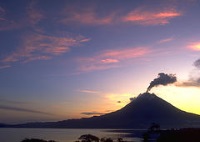
The Arenal Volcano National Park is situated in what is known as the 'Energetic Heart of Costa Rica'. At its centre is the 5,356 foot (1,633m) Volcán Arenal, a typically cone-shaped volcano despite being highly active, with some huge eruptions and larva flows that killed thousands of people in 1968. Although perpetually active, the degree of activity is unpredictable, ranging from rumbling and ground shaking to a smouldering red glow best visible at night. Sometimes visitors are treated to a fiery display of red-hot rocks being thrown into the air. The park has some good trails that go through forests, passing through the area that was flattened in the 1968 eruption, or across lava fields, but fences are in place to stop people from venturing too far up the dangerous slopes. There is also a good chance of seeing some of the wildlife in the forest. The Visitor Centre has video displays of the volcano's more exciting activity. It is not possible to stay overnight in the park or visit it after dark unless on one of the night tours from Fortuna.
Address : Seven miles (12km) from Fortuna
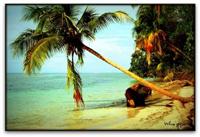
The only coral reef on the Costa Rican Caribbean coastline is found within this national park, and with 500 species of fish it affords excellent opportunities for snorkelling. Apart from the vibrant underwater colours and fish, there are two sunken ships to explore as well. The park was established in 1970 to protect the coral reef, but unfortunately it is still seriously threatened. While the land area of Cahuita National Park is small, it has stunning beaches and is good for both land and water activities, making it one of the most visited parks on the Caribbean coast. A well-defined trail runs through the coastal rainforest and howler monkeys and sloths are among the wildlife attractions. The area is also great for bird watching and if you are lucky you may see striking blue butterflies found in the jungle. The hike to the beach is flat and the path is easy to follow and winds through wonderful jungle scenery. Be sure to take some water and snacks for the walk and try to set out fairly early because it becomes more difficult to see animals later in the day. There have been some reports of robbery in the park so be aware and try to stay in groups.
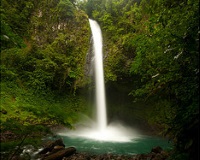
Fortuna is the nearest village to the spectacular Volcán Arenal. It has uninterrupted views of the volcano and provides a comfortable base for visiting the national park and other attractions. There are many tour operators in town offering night trips to see the red-hot volcanic activity from up close. Other tours combine luxurious soak in the hot springs while taking in the astounding show of bright red larva coursing down the slopes. You don't need a guide to enter the park and hike in the area but you must have a guide to visit at night. Trips to the Caño Negro Wildlife Refuge, and the Arenal Butterfly Conservatory, are also popular excursions, as is horse riding to the nearby waterfalls and their pools. Close to Fortuna is Lake Arenal, a picturesque lake offering watersports, fishing, and stunning scenery. There are also some rivers close by: the Pena Blancas River is great for relaxing cruises, and, for the more adventurous, the Rio Toro River boasts some impressive white water rafting through deep gorges and big rapids (class 3 - 4).
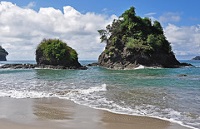
Manuel Antonio is the smallest national park in Costa Rica but also one of the more popular because of its beautiful white beaches, rocky headlands, and tropical rainforest. Among this varied landscape are typical Costa Rican animals like sloths, agoutis, monkeys, and iguanas. It has a well-developed trail system solo explorers, but knowledgeable local guides are also available at the park entrance. Picnic areas are situated along the coastal trails, and can admire the views from clifftop lookouts. Friendly Quepos is the nearest town to the park and is also the sport-fishing centre in the region. Sailfish and marlin are the sought after deep-sea prizes. Apart from fishing, there are zip line tours of the jungle canopy which are thrilling and fun and there is even a surf school located in the park. There are also a few spas located on the outskirts for those who want some pampering after an active day in the jungle.
Website : manuelantoniopark.com
Monteverde is a small community scattered along several kilometres of road that leads to the Monteverde Cloud Forest Biological Reserve. Originally bought for dairy farming, the reserve today is an integral part of Costa Rican society, known especially for their distinctive cheese that is sold throughout the country. After more hectares were added, it became the famous cloud forest reserve now so popular with tourists today. The village of Santa Elena is the closest settlement to the reserve and has a cloud forest reserve of its own, although much less visited. Monteverde has a number of other attractions, such as the Butterfly Garden, the Serpentarium, a cheese factory, and art galleries. CASEM Handicrafts Cooperative, made up of 140 local artisans, sells handmade goods and the profits go towards supporting the local community. There is also the Hummingbird Gallery near the entrance to the reserve that has feeders attracting several species of hummingbird. Several nature and hiking trails allow visitors to amble through coffee and banana plantations or up onto the hilltops for views of the cloud forest. On a clear day, you might get a chance to spy Arenal Volcano, and lots of birds and wildlife.
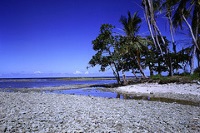
Puerto Limon is known not so much for its sights but for its proximity to some of Costa Rica's top natural attractions. Many cruise liners lay over in the port to allow passengers the chance to take excursions, and independent travellers come here from San Jose, along the scenic Guapiles Highway, to use Puerto Limon as a base for exploring the coast. Just south of the city is the popular and beautiful beach of Playa Bonita, easily accessible by taxi or bus, and inland there are myriad scenic excursions to appreciate the volcanoes, lush valleys, tropical rainforests, and national parks. Travellers and cruise ship passengers can organise trips from Puerto Limon on an aerial tram which traverses across the rainforest canopy in the Braulio Carrillo National Park. They can also travel to Costa Rica's capital, San Jose, passing through exotic scenery en route. The more active can opt for white water rafting on the Reventazon River, or a horseback trek from a nearby ranch through the jungle. One of the most popular outings is a boat trip up the Tortuguero Canal, which runs parallel to the coastline from Puerto Limon to the Nicaraguan border, affording the chance to enjoy some spectacular scenery and get close to wildlife.
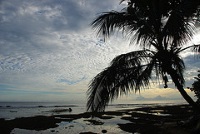
Puerto Viejo de Talamanca, known to locals as Puerto Viejo (not to be confused with Puerto Viejo de Sarapiquí in the northern lowlands), is a dusty little village lying between the forested mountains of Talamanca and the sea. The little town offers excellent surfing, an interesting mix of Afro-Caribbean and Bribri indigenous cultures, and delicious local food. The seven miles (12km) of coastline between Puerto Viejo and Manzanillo further east is one of the most stunning stretches in Costa Rica, featuring popular beaches such as Playa Cocles, Playa Chiquita and Punta Uva. There are many other activities in the area including fishing and horse riding, cultural tours and home stays, as well as excursions to the nearby Cahuita National Park. Puerto Viejo has a vibrant nightlife and great local music, meaning it's a good base for those who enjoy a party. Puerto Viejo de Talamanca is becoming increasingly touristy due to its popularity so if you prefer to avoid tourist hotspots, Puerto Viejo may not be the right place for your holiday. But if you are a sociable, sun-worshipping, music-loving adventurer, you will be in heaven, since all will agree that the beaches are sublime. In fact, there are so many exciting excursions out into the surrounding areas that there should be something for everybody.
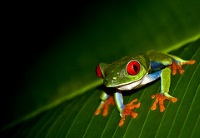
Despite its isolation on the northern part of the Caribbean coast, Tortuguero National Park is an extremely popular destination and one of the most important nesting sites of the green sea turtle, which lays its eggs here between July and October each year. Three other turtle species also use the beach as a nesting ground, namely the giant leatherback, hawksbill, and loggerhead turtles. The park covers an area of over 120 square miles (189 sq km), protecting not only the turtle beach, but also wetlands, swamps, forests, and one of the most developed reefs in the country. Nature trails in the park offer opportunities for wildlife viewing and birding and a network of waterways serves as an alternative method of transportation and exploration. Approximately 50 percent of Costa Rica's bird and reptile species are found in the park along with a diversity of flora and fauna, including endangered mammals like the jaguar, sloth, tapir, and manatee. Most visitors come to watch the spectacular sight of thousands of marine turtles laying their eggs or to observe the hatching. Guided tours are recommended to control the amount of disturbance caused by the increasing numbers of tourists, and guides provide a wealth of information about the area. Beaches are beautiful but not suitable for swimming as the surf is rough and sharks are present. The area also receives a large amount of rain and insect repellent is necessary to keep the mosquitoes at bay.
Website : www.acto.go.cr

Travel Guide powered by Word Travels, copyright © 2023 Globe Media Ltd. By its very nature information in this travel guide is subject to change at short notice and travellers are urged to verify information on which they're relying with the relevant authorities. Neither Globe Media Ltd nor Travel Vogue can accept any responsibility for any loss or inconvenience to any person as a result of information contained above.